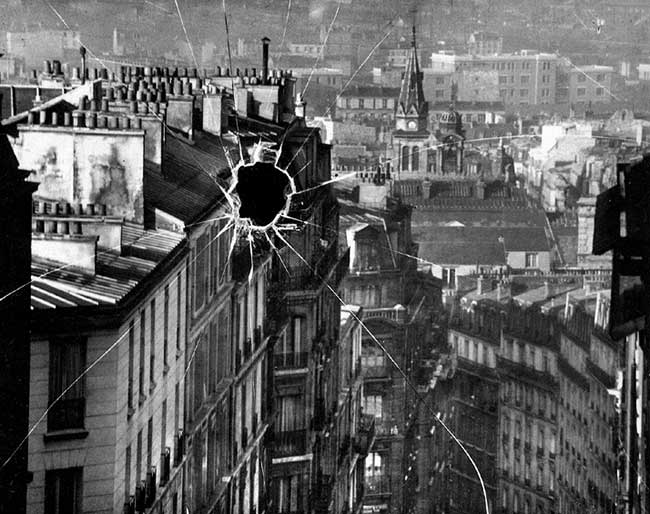André Kertész is understood by many to have been a trailblazer of twentieth century photography, informing the practices of many, notable photographers such as Brassaï and Henri Cartier Bresson.
Kertész emigrated from Hungary to Paris following the First World War in 1925, leaving behind his fiancé and family. He was among many Hungarian photographers who emigrated to the city, including well-known names such as Robert Capa, and Lazslo Maholy-Nagy. Here, he built up his portfolio, and began mixing with other members of the Parisian avant-garde.
In particular, Kertész’s practice was informed by the politics of the early twentieth century Dada movement. The Swiss artist, Tristan Tzara wrote in the first Dada manifesto of rejecting tradition in favour of destruction. The work of artists associated with the movement was often comic, nonsensical, and experimental. Indeed, Kertész’s photographs are reflexive, and notable for the subtle and the often humorous way they reflect on the medium of photography itself. For example, Broken Plate, 1929, depicts Montmartre rooftops in a way we are familiar with viewing them. What is not familiar, however, is the shattered hole in the middle of the picture, fragmenting the view. Here, Kertész exploits a mistake – accidentally shattering the glass plate, used to make his photographs – to create a trompe l’oeil.
Kertész’s photography raised questions about art and value. Following his debut exhibition at the Sacré du Primtemps gallery in 1927, many French critics struggled to find a vocabulary for the art Kertész produced. In particular, it was the location of artistry which troubled the critics: it was an art that relied on a mechanical device rather than the hand and didn’t consciously manipulate a motif. The critics’ lack of rhetoric is an offers an interesting response to Dada. The founders of the movement, who called for the dismantling of tradition rooted their critique in language and discourse. To Tzara and Hugo Ball, another early adopter of the movement and its aesthetics, there could be no revolution without an entirely new vocabulary for which to articulate it. Kertész adopts this approach in relation to visual language and introduced to critics the idea the photography was a process of selection and opportunity.
One notable example of the way in which his composition strategies identify visual rhymes in the world around him, is Washington Square, Winter (1954). Kertész uses height to his advantage, taking a picture of Washington Square from above. Here, the picture takes on the quality of a design that could tesselate, like you might see in a fabric pattern repeat. The trees and the winding path, with solitary figures walking along them, become abstract. The photograph has become one of the photographer’s most celebrated images and typifies the Dadaists’ search for new perspectives and visions as a means of rebuilding the world anew
